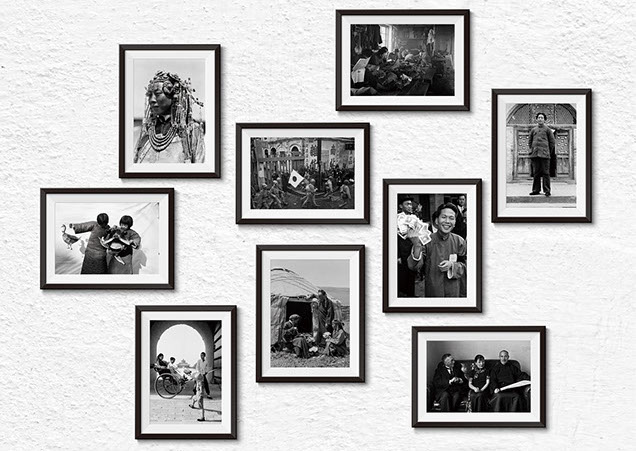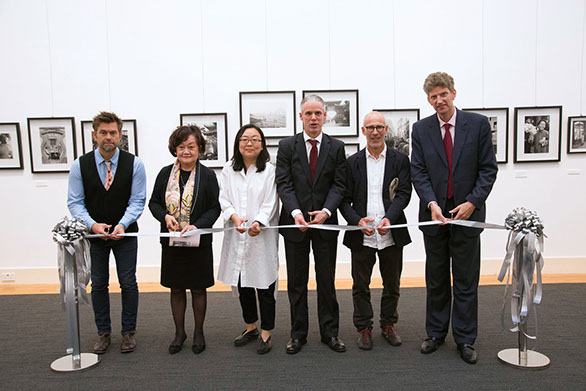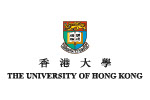
From peasant farmers through Shanghai society ladies to Mao as a young man, Swiss adventurer and photojournalist Walter Bosshard (1892 –1975) photographed the ordinary people and extraordinary people of China in the 1930s. The exhibition Bosshard in China: Documenting Social Change in the 1930s at the University Museum and Art Gallery (UMAG), comprised 120 of those images which capture what was a tumultuous time with a profound clarity.
“Bosshard was a photojournalist of a kind that no longer exists,” said UMAG Director Dr Florian Knothe. “He was given the extraordinary assignment of living in China for nearly a decade from 1931, and more permanently from 1933 to 1939, and photographing whatever he wanted. His images basically introduced China to Europeans who had no idea about the people of China, and he shone a light on every aspect of life.
“He was very deliberately neutral and acknowledged to be so,” said Dr Knothe. “He had no news agenda, and so he presented his images and words very fairly, never taking sides, simply showing what was.”
It is clear from the images and his text, that Bosshard was an extraordinary man. Dr Knothe describes him as an adventurer. “He was good-looking, gregarious, and a very organised traveller. He spoke Putonghua and made many friends in China, including the likes of Chiang Kai-shek and Madame Chiang Kai-shek, Soong Mei-ling, whom he adored. He also became close to Mao and talked to him on numerous occasions.”

![]() Bosshard’s images basically introduced China to Europeans who had no idea about the people of China, and he shone a light on every aspect of life.
Bosshard’s images basically introduced China to Europeans who had no idea about the people of China, and he shone a light on every aspect of life. ![]()
Dr Florian Knothe
Friends with Mao
One of the most outstanding pictures in the exhibition is Bosshard’s portrait of Mao, taken in Yan’an in 1938 where he was based after the Long March and where he united his party ready to do battle with Chiang Kai-shek’s Nationalist Party. “This is not one of the ‘official’ pictures of Mao,” said Dr Knothe. “It is unusual to see the future leader in scruffy attire with his hair disheveled – not the usual slicked back portraits with which the world is familiar. Bosshard visited Mao regularly and wrote a long article on him, and this portrait reflects that familiarity with the subject.”
It is one of Bosshard’s skills that his photographs make the viewer want to have the same familiarity. The saying is that every picture tells a story, and nowhere is that more true than here where the viewer yearns to know the real story behind the tableaux image. A particularly striking scene has a young Chinese man, clearly injured, sitting on the running board of an expensive car, which bears a swastika and appears to be a diplomatic or official vehicle. Behind the car, are two westerners, one of them particularly stylishly dressed in spats and pleated white trousers. They are standing in front of a large wooden gate.
Dr Knothe explained that this picture was taken as an example of Westerners getting involved to help injured Chinese wounded when fighting the Japanese invaders in 1938.
Another picture shows a well-dressed young man, clutching a wad of bank notes and grinning broadly. From the way he is brandishing the cash, the assumption is he won it – but we will never know. Then there’s the shot of poor Chinese workers walking down the street in the French Concession 1938, while behind them a cinema billboard advertises ‘Shirley Temple in Heidi’. It is an incongruous juxtaposition.
In addition there are photographs of everyday life at the time for rich and poor, extensive scenes of villagers in remote areas of Mongolia and a section devoted to the Chinese preparing for war with Japan – including a fascinating sequence of orphans getting ready to be evacuated – and of Japanese soldiers entering the city of Hankou.
As well as still photographs, the exhibition included five short films shot by Bosshard, chosen because they are closely related to the photos. Some characters appear both in the films and the stills, which lends them a further familiarity. The black and white films are run with no sound and show scenes ranging from soldiers in formation, through Mongolian wrestlers, to street scenes and Mao speaking.
The exhibition showcased a collaboration with the National Archive for Swiss Foundation of Photography, where some 60,000 of Bosshard’s negatives are stored, and its display, and the book that went with it, were supported by the Swiss Consulate in Hong Kong and the Hong Kong University Museum Society.
It also marks the Gallery’s initial collaboration with HKU’s Journalism and Media Studies Centre. The museum staff used the exhibition as a tool to talk to students about journalism, in particular photojournalism as it was back in the 1930s compared to how it is now.
For Dr Knothe, it was important to show Bosshard’s pictures as he feels they have not received the recognition they deserve. “I cannot understand why Bosshard is not more famous in Europe and across the world. I think he compares with Hungarian war photographer Robert Capa.”
There are certainly similarities between the two. Capa famously said: “If your photographs are not good enough, you are not close enough.” From the evidence of this exhibition, it appears that Bosshard would agree. Without the benefits of high definition super zoom lenses his shots are clearly very close to the action – whether it is Japanese soldiers marching into Hankou or a Chinese gentlewoman in a rickshaw, he takes the viewer right to the centre of things. His coverage is comprehensive: he captures everyday life and ordinary people, as well as extraordinary people on the verge of doing extraordinary things.
Every Picture is a Story
An exhibition of the works of Swiss photojournalist Walter Bosshard offered a fascinating insight into life in China in the 1930s.

(From left) UMAG Curator and Publisher Christopher Mattison, Vice-Chairman of the HKU Museum Society
Anna Ann Yeung, Co-Founder and Co-Director of Lianzhou Museum of Photography Duan Yuting, Consul General of Switzerland in Hong Kong and Macau Reto Renggli, Director and Curator of the Swiss Foundation
of Photography Peter Pfrunder and UMAG Director Dr Florian Knothe.
Back
Home
November 2018
Volume 20
No. 1

